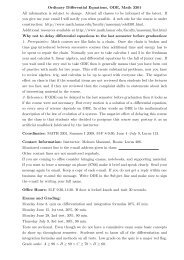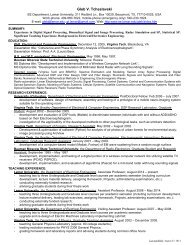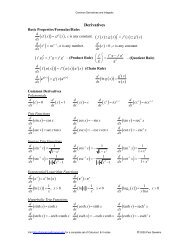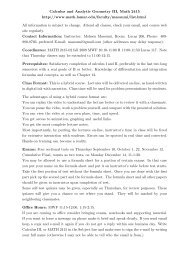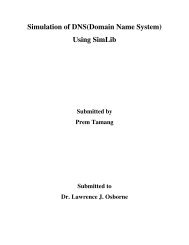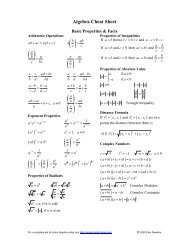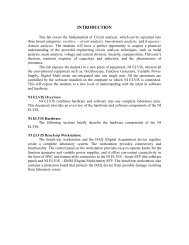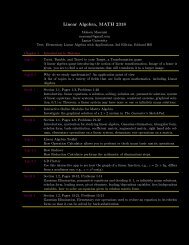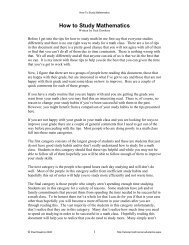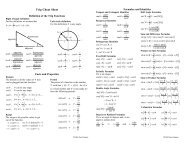Algebra/Trig Review - Pauls Online Math Notes - Lamar University
Algebra/Trig Review - Pauls Online Math Notes - Lamar University
Algebra/Trig Review - Pauls Online Math Notes - Lamar University
Create successful ePaper yourself
Turn your PDF publications into a flip-book with our unique Google optimized e-Paper software.
<strong>Algebra</strong>/<strong>Trig</strong> <strong>Review</strong>Note that the results will often be “messier” than the original expression. However,as you will see in your calculus class there are certain problems that can only beeasily worked if the problem has first been rationalized.Unfortunately, sometimes you have to make the problem more complicated in orderto work with it.t + 2−22.2t − 4SolutionIn this problem we’re going to rationalize the numerator. Do NOT get too locked intoalways rationalizing the denominator. You will need to be able to rationalize thenumerator occasionally in a calculus class. It works in pretty much the same wayhowever.( t+ 2− 2)( t+ 2+ 2)t + 2−4=2 2t − 4 t+ 2+ 2 t − 4 t+ 2+2( )( ) ( )( )==t − 2( t− 2)( t+ 2)( t+ 2+2)1( t+ 2)( t+ 2+2)Notice that, in this case there was some simplification we could do after therationalization. This will happen occasionally.Functions21. Given f ( x) =− x + 6x− 11 and g( x) 4x3(a) f ( 2)(b) g ( 2)(c) f ( − 3)(d) g ( 10)(e) f ( t ) (f) f ( t− 3)(g) f ( x− 3)(h) f ( 4x−1)= − find each of the following.SolutionAll throughout a calculus sequence you will be asked to deal with functions so makesure that you are familiar and comfortable with the notation and can evaluatefunctions.First recall that the f ( x ) in a function is nothing more than a fancy way of writingthe y in an equation so© 2006 Paul Dawkins 12http://tutorial.math.lamar.edu/terms.aspx




